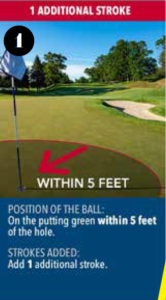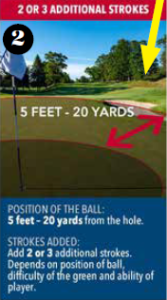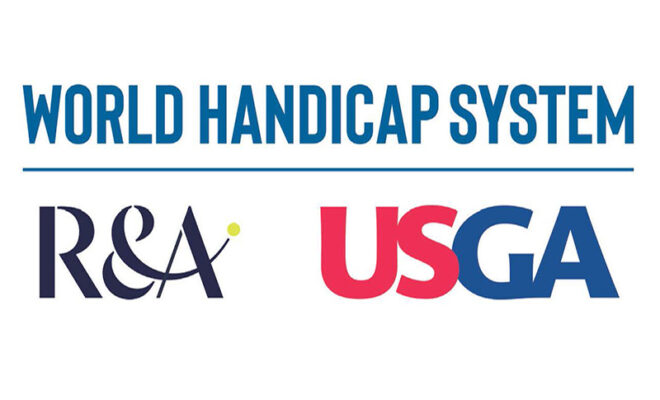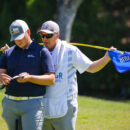When Time Is of the Essence: What to Do When You Can’t Finish

SUMMER OFTEN BRINGS about an opportunity for early evening golf, and this periodically results in a race against darkness. To help get through as much of the course as possible, or to determine what to do when darkness wins, three handicap items can be helpful.
 1. MAXIMUM HOLE SCORE
1. MAXIMUM HOLE SCORE
For handicap purposes, maximum hole score is double bogey plus handicap strokes received on a hole. The World Handicap System (WHS) calls this “net double bogey.” This is tied to the player’s Course Handicap and uses the line on the scorecard usually identified by the word “handicap” or an abbreviation like HDCP to determine where a player receives strokes. Adding the number of handicap strokes received on a hole to double bogey (2 over par) will give the maximum score for handicap purposes on a hole. If you know your maximum on a hole, and you’ve reached one stroke less than your maximum and haven’t holed out, you can pick up and record your maximum hole score for handicap purposes.
 2. MOST LIKELY SCORE
2. MOST LIKELY SCORE
A player doesn’t have to wait until he or she is close to their maximum score to pick up. To expedite speedy play, these options exist:
▪ If you’re playing a particular hole and the urge strikes to proceed to the next hole, use the “most likely score” procedure and move to the next hole.
▪ Let’s say you’re playing in a four-ball (better-ball) event and your partner makes a 3 as you lie 4. If your maximum hole score for handicap purposes on the hole is, say, 7, you don’t need to wait. You can use the “most likely score” procedure and pick up immediately.
Note: The most likely score cannot exceed the maximum hole score for the player.
 3. HOLES NOT PLAYED
3. HOLES NOT PLAYED
Last but not least, if darkness wins before you complete a round and you can’t play a hole, you take net par/par plus any handicap strokes received on a hole. This applies a “normal” hole score specific to the player to complete the round score. This procedure only applies if you have played at least seven holes to have a nine-hole score or 14 holes to post an 18-hole score.
When time is of the essence, each of the referenced scenarios can help improve pace of play and allow you to post a score for handicap purposes, while still following the Rules of Handicapping. Hopefully, these features will maximize your enjoyment on the course, even if you’ve had a bad hole or don’t feel like completing certain holes. Holing out at each hole is not a requirement to have a score for handicap purposes. (Though be aware that in certain scenarios you might be disqualified from a competition that requires you to hole out.)
While darkness ultimately wins, the choices above should help you post a score. It is strongly encouraged that you post the score for handicap purposes on the day it is played, since handicaps are updated each night just after the stroke of midnight.











